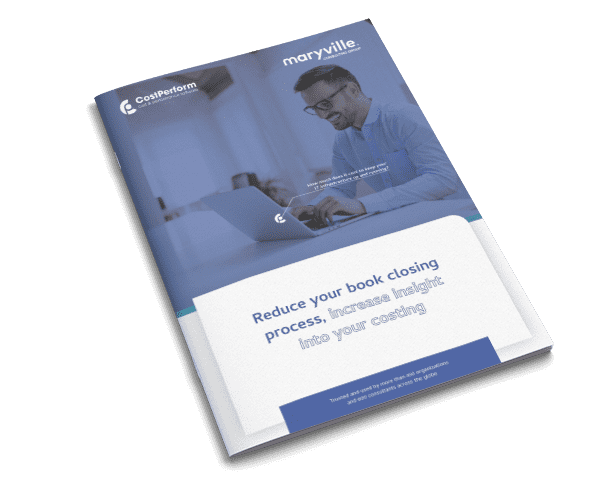(Longread) A management consultant mentioned to me that a company had inquired to him whether they should consider using Activity-Based Costing (ABC). His next step was initially encouraging…
He contacted the accounting departments of the inquiring company’s major competitors. He asked them if they are using ABC. The answer from them was that none of them are. His advice to them was surprising, but not totally surprising, to me. accounting magazines. But I am unsure how much the evidence supports the vision.
He could have provided better advice
I was hoping the next thing he would tell me is this. I was hoping he would inform the inquiring company that they had an opportunity to gain a competitive edge by using the ABC information.
Sadly, he advised the inquiring company that since its competitors do not use ABC then that is evidence that ABC is of little benefit.
Gary Cokins, cost management expert
I presumed he would say to them, “I have good news for you. Your instincts are correct. You have realized that the amount of your indirect and shared expenses, commonly called overhead, has grown large relative to your direct expenses. You may understand that this expansion is a result that your products and services have expanded with much diversity and variations. And the result is that complexity has caused this increase of more overhead to manage the complexity. By your using a highly aggregated indirect cost pool with a single allocation factor that has no cause-and-effect relationship with those indirect expenses, the consequence is that you are simultaneously over- and-under-costing your products. Their costs do exactly reconcile in total but not in with parts. This is because cost allocations are a zero-sum error condition. Your competitors do not realize this, but you do. Go for it. Implement ABC. Your company will much better understand their profit margin layers and where it makes and loses money – and why.”
Sadly, he advised the inquiring company that since its competitors do not use ABC then that is evidence that ABC is of little benefit. How long can this ignorance continue?
My criticism of accountants
Those readers who know about me recognize that I have been relentless in criticizing accountants who mostly remain in the 1960s. They are exposing their organizations to a risk that the enterprise risk management (ERM) community rarely references – invalid and flawed cost information that leads to misleading profit margin information.
I remain in awe. The advanced and mature organizations that have adopted ABC would never go back to traditional standard costing (unless a new mindless CFO or CEO shows up and rejects ABC as too complicated and abandons it).
The longer these types of denial accountants delay applying ABC, the greater the risks. The issue here is not mainly about product and standard service-line costing. The issue is about the emerging need to report and analyze channel and customer profitability. This includes the broader scope of distribution channel, marketing, selling, and customer service expenses that are below the product gross profit margin line.
When the consultant advised his inquiring company that their competitors are not using ABC, then it is a case of the blind leading the blind.
Gary Cokins, cost management expert
Distorted results
Open your eyes. It is apparent that today customers view almost all suppliers’ products as commodities. They want to be specially treated and serviced. This means that suppliers must provide differentiated services to increasingly differentiated micro-segments of customers. These are cost-to-serve costs, not product and standard service-line costs.
An increasing pressure comes when suppliers recognize that they have high maintenance customers, in contrast to low maintenance ones, whose extra costs erode profits. The objective of sales and marketing is no longer about growing market share and sales, but rather it is about growing profitable sales. Accountants must accurately measure the ‘middle line’ to subtract from the ‘top line’ because the ‘bottom line’ – profits – is a derivative from both of them. And to use large aggregated cost pools with a non-causal allocation factor (e.g., sales amounts, number of labor/machine input hours, number of unit produced, headcount) to allocate costs is irresponsible. The results are distorted.
When the consultant advised his inquiring company that their competitors are not using ABC, then it is a case of the blind leading the blind. And, remember, that in the land of the blind the one-eyed man is king.
Laugh or cry?
I remain dismayed by the slow adoption rate of ABC. The eminent Harvard Business School Professor Robert S. Kaplan began publishing his research about ABC in the 1970s. He co-authored this book in 1987: Relevance Lost: The Rise and Fall of Management Accounting. That was a 33 years ago. Kaplan described how substantially inaccurate traditional product costing was then with 30+% or more error. The result is managers and executives are reported flawed and misleading data from which they gain insights and make decisions from.
The minimal application of ABC continues today. It is a pathetic situation. I do not know if I should laugh or cry.

About Gary Cokins
Gary Cokins (Cornell University BS IE/OR, 1971; Northwestern University Kellogg MBA 1974) is an internationally recognized expert, speaker, and author in advanced cost management and enterprise performance and risk management systems. He is the founder of Analytics-Based Performance Management LLC, an advisory firm located in Cary, North Carolina. He began his career in industry with a Fortune 100 company in CFO and operations roles. He then worked 15 years in consulting with Deloitte, KPMG, and EDS. From 1997 until recently Gary was a Principal Consultant with SAS.
Gary Cokins, CPIM
gcokins@garycokins.com
http://www.garycokins.com
